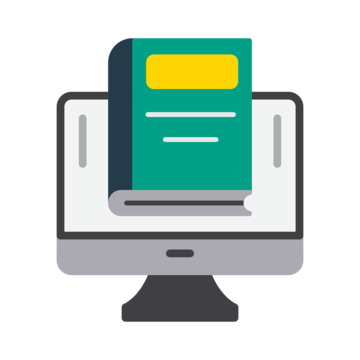Free PECB ISO-IEC-42001-Lead-Auditor Exam Questions
Become PECB Certified with updated ISO-IEC-42001-Lead-Auditor exam questions and correct answers
While preparing for an AIMS audit, a technology company faced an issue: the auditor lacked a required security clearance for accessing sensitive information related to government contracts. The company requested a replacement auditor. Is this acceptable?
Which of the following examples depicts frequent analysis?
Scenario 2 (continued):Empsy HR Solutions is a human resources consulting company that provides innovative HR solutions to diverse industries.Recognizing the significant impact of artificial intelligence Al in HR processes, including its ability to automate repetitive tasks, analyzevast amounts of data for insights, improve recruitment and talent management strategies, and personalize employeeexperiences, thecompany has initiated the implementation of an artificial intelligence management system AIMS based on ISO/IEC 42001. Initially, the top management established an Al policy that was aligned with the company's objectives. The Al policy provided a frameworkfor defining Al objectives, a commitment to meeting relevant requirements, and a dedication to continually improve the AIMS. However, it did not refer to other organizational policies, although some were relevant to the AIMS. Afterward, the top management documented thepolicy, communicated it internally, and made it accessible to interested parties. The top management designated specific individuals to ensure that the AIMS meets the standard's requirements. Additionally, theyensured that these individuals were responsible for overseeing the AIMS, reporting its performance to the top management, andfacilitating continual improvement. Moreover, in its awareness sessions, the company focused exclusively on ensuring that all personnel were informed about the Al policy, emphasizing their role in ensuring the effectiveness of the AIMS and the benefits of enhanced Alperformance. The company also planned, implemented, and monitored processes to meet AIMS requirements. Additionally, it set clear criteria andimplemented controls based on them, ensuring effective operation, alignment with organizational objectives, and continual improvement.Empsy HR Solutions decided to implement strict measures to control changes to documented information within the AIMS. To ensure theintegrity and accuracy of documentation, the company adopted version control practices. Each document update was tracked using aversioning system, with clear records of what was modified, who made the changes, and when the updates occurred. Access to makechanges was restricted to authorized personnel, and any proposed modifications required approval from the designated managementteam before being implemented. Moreover, considering past experiences where the company encountered unforeseen risks, Empsy HR Solutions established acomprehensive Al risk assessment process. This process involved identifying, analyzing, and evaluating Al risks to determine if it isnecessary to implement additional controls than those specified in Annex A. The company also referred to Annex B for guidance onimplementing controls and, ultimately, produced a Statement of Applicability So A. The SoA contained the necessary controls, including allthe controls of Annex A and justifications for their inclusion or exclusion. Lastly. Empsy HR Solutions decided to establish an internal audit program to ensure the AIMS conforms to both the company'srequirements and ISO/IEC 42001. It defined the audit objectives, criteria, and scope for each audit, selected auditors, and ensuredobjectivity and impartiality during the audit process. The results of the first audit were documented and reported only to the top management of the company. Does the company's implementation of version control practices for documented information align with the requirements of ISO/IEC 42001?
Scenario 3:ArBank is a financial institution located in Brussels, Belgium, which offers a diverse range of banking and investment servicesto its clients. To ensure the continual improvement of its operations, ArBank has implemented a quality management system QMS based on ISO 9001 and an artificial intelligence management system AIMS based on the requirements of ISO/IEC 42001. Audrey, an experienced auditor, led an internal audit focused on the AIMS within ArBank. She assessed the chatbots integrated into thebank's website and mobile app, analyzing communications using big data technology to identify potential noncompliance, fraud, orunethical conduct. Instead of relying solely on the information provided by the chatbots, Audrey sought out evidence that would eitherconfirm or challenge the validity of the data, ensuring her conclusions were based on reliable and accurate information. Her review ofselected chatbot interactions confirmed they met their intended purpose. For the specific context of ArBank's operations, Audrey utilized an Al system to assess the efficiency of the bank's digital infrastructure,focusing on tasks critical to the Finance Department. This Al system was able to analyze the functionality of chatbots integrated intoArBank's website and mobile app to determine if it adheres to ISO/IEC 42001 requirements and internal policies governing customerservice in the banking sector. In addition, Audrey conducted a deeper assessment of the banks AIMS. Her evaluation included observing different stages of the AIMSlife cycle, from development to deployment, to ensure that roles and responsibilities were clearly defined and aligned with ArBanksoperational goals. She also evaluated the tools used to monitor and measure the performance of the AIMS. Audrey continued the audit process by auditing ArBank's outsourced operations. Upon checking the contractual agreements between thetwo parties, Audrey decided that there was no need to gather audit evidence regarding the contractual agreement. She reviewed thecompany's processes for monitoring the quality of outsourced operations, determined whether appropriate governance processes are inplace with regard to the engagement of outsourced persons or organizations, and reviewed and evaluated the company's plans in case ofexpected or unexpected termination of the outsourcing agreement. Based on the scenario above, answer the following question: Which audit principle did Audrey demonstrate while assessing the chatbots?
Scenario 9 (continued):Scenario 9: Securisai, located in Tallinn.Estonia, specializes in the development of automated cybersecurity solutions that utilize AIsystems. The company recently implemented an artificial intelligence management system AIMS in accordance with ISO/IEC 42001. Indoing so, the company aimed to manage its Al-driven systems capabilities to detect and mitigate cyber threats more efficiently andethically. As part of its commitment to upholding the highest standards of Al use and management, Securisai underwent a certificationaudit to demonstrate compliance with ISO/IEC 42001. The audit process comprised two main stages: the initial or stage 1 audit focused on reviewing Securisai's documentation, policies, andprocedures related to its AIMS. This review laid the groundwork for the stage 2 audit, which involved a comprehensive, on-site evaluation of the actual implementation and effectiveness of the AIMS within Securisai's operations. The goal was to observe the AIMS in operation,ensuring that it not only existed on paper but was effectively integrated into the company's daily activities and cybersecurity strategies. After the audit, Roger, Securisai's internal auditor, addressed the action plans devised to rectify nonconformities identified during thecertification audit. He developed a long term strategy, highlighting key AIMS processes for triennial audits. Roger's internal audits play a key role in advancing Securisai's goals by employing a systematic and disciplined method to assessand boost the efficiency of risk management, governance processes, and strategic decision-making. Roger reported his findings directly to Securisai's top management. Following the successful rectification of nonconformities, Securisai was officially certified against ISO/IEC 42001. Recently, the company decided to transfer its ISO/IEC 42001 certification registration from one certification body to another despitebeing initially bound by a long-term agreement with the current certification body. This decision was motivated by the desire to partnerwith a certification body that offers deeper insights and expertise in the rapidly evolving field of artificial intelligence in cybersecurity. To ensure a smooth transition and uphold its certification status, Securisai is diligently compiling the required documentation forsubmission to the new certification body. This includes a formal request, the most recent audit report underscoring its adherence toISO/IEC 42001, the latest corrective action plan that highlights its continuous efforts toward improvement, and a copy of its current validcertification registration. A year following Securisai's initial certification audit, a subsequent audit was carried out by the certification body on its AIMS. The purpose of this audit was to assess compliance with ISO/IEC 42001 and verify the ongoing improvement of the AIMS. The audit team concluded that Securisai's AIMS consistently meets the requirements set by ISO/IEC 42001. In the context of Rogers action plan at Securisai, was the plan he developed a general plan or a detailed plan?
© Copyrights DumpsCertify 2025. All Rights Reserved
We use cookies to ensure your best experience. So we hope you are happy to receive all cookies on the DumpsCertify.


